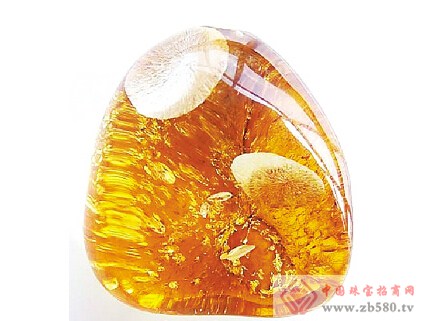The quality of amber is firstly determined whether it is true or not, whether it is amber or imitation amber (barba resin, plastic, glass, etc.); it is amber, further determined to be natural amber, or amber treated by remelting, dyeing, etc. value). Identification work often requires a strong light tube, a magnifying glass with a high magnification, as well as a needle, a small lighter, a knife, a nail polish water, a saturated brine, an organic reagent, and the like. Detection requires a comprehensive approach, and try not to use destructive methods. 1. Magnification inspection: This is the most important first level of identification work. Observe the contents. Natural amber is sometimes found in insects, plant leaf clumps, minerals (such as Burmese amber commonly contains calcite) and other inclusions. Most of the insects in the replica are first buried and then embedded; they are easily distinguished from the insects in the natural product. Whether there are cracks on the surface of the turtle, generally the old amber is oxidized by contact with air to produce a relatively uniform and fine honey crack; the crack of the replica is thicker and less, and there is a significant difference between the two. Whether the color is natural, whether there is artificial coloring; the color of dyed amber (red, blue, green) is unnatural, and there is a dye distribution in the microcrack. Artificially heat treated amber (in oil, or heated in sand to increase transparency), generally with disc-like, leaf-like cracks (water lily leaves) (photo), which is currently popular in the form of random shaped Baltic amber pendants It is very common. According to national standards, heat treatment is “optimized†and the name column in the test report may be unspecified; however, it should be described in the magnified check field of the test report. The polymerization of small pieces into larger blocks by hot pressing is a "reconstituted amber" (in accordance with national standards). Reconstituted amber often shows the presence of impurities in the joints of the original pieces. 2. Refractive index measurement: The refractive index of amber is relatively fixed, about 1.540±. The refractive index measurement results help to objectively distinguish between amber and imitation amber. 3. Density measurement: Jewelry testing laboratory generally uses precision balance to measure water according to the Archimedes principle (hydrostatic method), and after temperature calibration, the obtained density value, combined with refractive index data, can be used for amber and non-amber. Conduct a more accurate identification. Some commercial household saturated brine (50ml water plus 7 grams of salt, density of 1.19g / Cm3) for the ups and downs experiment: amber density of 1.05 - 1.10g / Cm3, floating on saturated brine; but containing minerals wrapped The body's amber can be as high as 1.3, so it will sink; the general business rarely uses this method to discriminate, but the show is for the buyers of the layman. During the experiment, plastic, celluloid (acetate), bakelite sink; polystyrene will float, but its refractive index is 1.59, a refractive index can be easily distinguished. After the salt water test, rinse with water and dry with a soft cloth. Bakelite, also known as Baker in the West, is the name of the chemist (LeoHendrik Beakeland), who invented Bakelite in 1909. 4, UV fluorescence experiment: different colors of amber, both long- and short-wave UV fluorescence are blue-white fluorescence; transparent weak, opaque strong. But some dark ambers are not fluorescent. The fluorescence of a typical plastic replica is quite different from that of amber. 5, needle burning method: heating the needle to red, hot on the surface of the amber inconspicuous (such as the perforated wall) produced by the smoke, black, loose smell, the place is gray. The plastic imitation smoke is pungent, blue or white, melted when it is burned, and the silk will be taken when the needle is taken out. Celluloid has a mothball flavor. 6, finger rubbing method: If the amber will have a loose fragrance. 7, scraping method: with a sharp knife, blade lightly scratch the surface of the inconspicuous, amber, smashing scraping powder is granular, the scraping surface is a little flash. The plastic scrapings are in the form of curled sheets with smooth shaving and no flashing spots. 8. Reagent experiment: Ether (methyl ether, Ether), acetone drops on the surface of the bar and the general resin into a paste; the drop on the amber surface does not react, which is the simplest method to identify amber and bar. Since the ether evaporates quickly, no obvious dissolution phenomenon is generally observed. Practice has shown that the dissolution of amber can be dissolved for a longer period of time. Polystyrene is easily soluble in benzene and toluene. According to Qiu Zhili, Spencer [7] studied Keba resin in Kauri, New Zealand, and found that a drop of ether was applied to Kauri Coba resin, and there was no reaction or slight reaction after 30 seconds. If a drop of alcohol is applied to Kauri Coba resin (including 25 million years of resin), an alcohol-soluble reaction occurs after 30 seconds: the surface is sticky or becomes opaque. The real amber drops on the alcohol is completely unresponsive. 9. The identification of amber and imitation amber by infrared absorption spectrum is objective, scientific and accurate. Amber raw materials and handicrafts with high value can be tested by infrared absorption spectroscopy. The interpretation and comparison of the infrared absorption spectrum of amber requires high expertise. Winter Warm Top,Heavy Knit Top,Lace Stitching Knit Top,Geometric Joining Knit Top SHAOXING CHENYEE TEXTILE CO. LTD , https://www.fabriccy.com